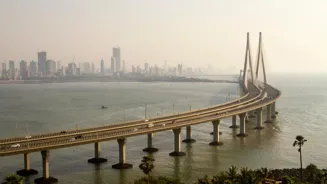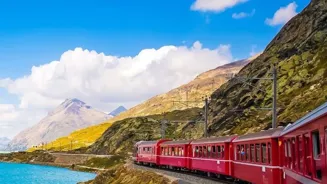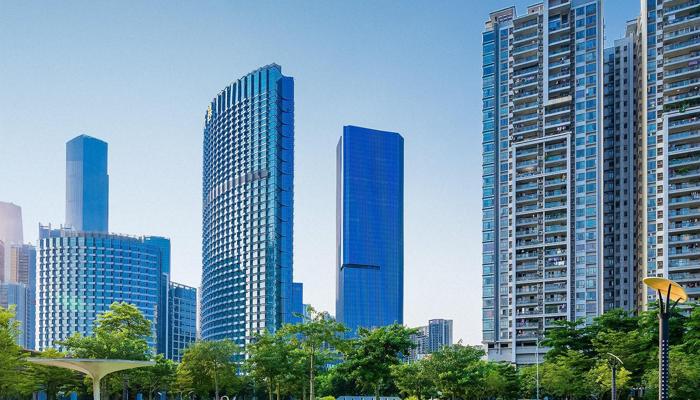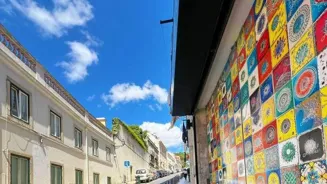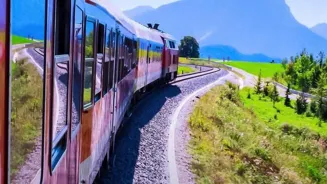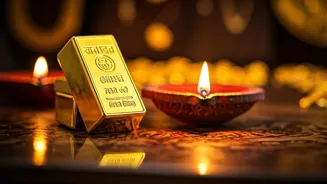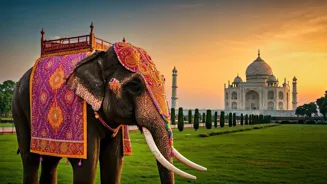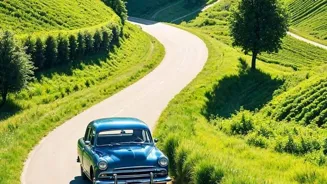What is the story about?
Bridges aren’t just about getting from one place to another to cover distance. In India, many of them are living landmarks; they carry history, stories,
and culture along with people and vehicles who are on a journey of their own. Some bridges have roots in mythology, others in colonial times, and some are wonders of the modern world that define our cities today. Let us go on a journey across five of India’s most iconic bridges and discover the stories behind them.
Lakshman Jhula, Rishikesh
Lakshman Jhula hangs over the holy Ganga in Rishikesh, and it feels less like a bridge and more like a walk into a legend. It is said that Lord Lakshman crossed the river here on ropes that were made from jute. In 1929, the suspension bridge was built in iron to provide extra support after the old scaffolding was damaged in 1924. The bridge is approximately 450 feet long and connects Tapovan and Jonk, two areas of Rishikesh. Take a walk across the bridge, and you will be able to feel the river rushing below while sadhus, tourists, and locals brush past. Even though it was recently closed for safety reasons, its timeless charm and stories continue to live on.
Howrah Bridge, Kolkata
No picture of Kolkata is complete without the mighty and tall Howrah Bridge in the background. It was completed in 1942 and commissioned in 1943. This bridge stretches across the Hooghly River, and the crazy part? It was made without nuts and bolts! It relied entirely on over 26,000 tonnes of steel rivets and is considered one of the longest cantilever bridges in the world. However, it is not just about the size; the bridge carries more than a lakh vehicles and countless pedestrians daily, which makes it one of the busiest bridges in the world. For the locals, it is not simply just a bridge; it is a symbol of the city’s heartbeat and identity.
Bandra-Worli Sea Link, Mumbai
This one is Mumbai’s pride and an icon of modern times. Opened in 2009, the Bandra-Worli Sea Link is a sleek cable-stayed bridge that cuts across the Arabian Sea, connecting the western suburbs to South Mumbai. Its length stretches up to 5.6 kilometres, and it has significantly reduced the travelling time between Bandra and Worli. However, for Mumbaikars, it is more than just a time-saver for traffic; it is also a drive to remember. With the sea on both sides, the city skyline in view, and the salty breeze that hits your face when you roll down the windows, the bridge makes you feel the ambition and the magical energy of Mumbai.
Pamban Bridge, Tamil Nadu
If there is one bridge which truly feels like it is floating on the sea, it is the Pamban Bridge in Tamil Nadu. It was built in 1914, and connects Rameswaram to mainland Tamil Nadu and was India’s first sea bridge. What makes the Pamban Bridge special is its design; it has a bascule section that can actually open up to let ships pass through. It is a breathtaking sight to see a train glide across the turquoise waters of the Indian Ocean. Even today, the bridge is a lifeline for locals and a wonder for the travellers who witness it. For many people, crossing this bridge by train feels like a once-in-a-lifetime experience.
Godavari Arch Bridge, Rajahmundry
Located down south in Andhra Pradesh, the Godavari Arch Bridge is a beauty in itself. It was built in 1997 and replaced the old Havelock Bridge, and became a key railway connection across the Godavari River. Its bow-shaped arches give it a very graceful look, especially at night when the lights shimmer across the water below. For many train travellers, crossing this bridge is a scenic highlight with the mighty Godavari flowing below.
Do you find this article useful?
